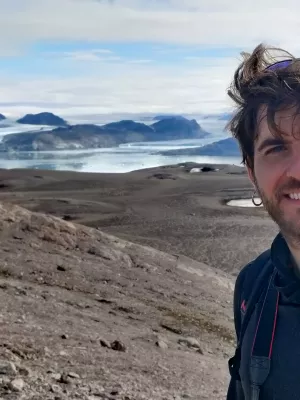
Albert Brangarí
Researcher

Connecting bacterial colonization to physical and biochemical changes in a sand box infiltration experiment
Author
Summary, in English
Infiltration through sediments is linked to complex biogeochemical processes occurring at small spatial scales, often leading to a progressive reduction in infiltration rates due to microbial growth and/or mechanical clogging. Unraveling the linkage between microbial dynamics and water infiltration in a heterogeneous medium is of concern in artificial recharge ponds and natural infiltration systems. We present an 84-day laboratory infiltration experiment that aims at studying the temporal variation of selected biogeochemical parameters at different depths along the infiltration path. The experimental setup consists of a 1.2 m high tank packed with a heterogeneous soil and instrumented with arrays of sensors as well as soil and liquid samplers. Results indicate that: (i) microbial processes are responsible for infiltration reduction, enhancing the spatially heterogeneous distribution of infiltration rates with time, (ii) bacteria and extracellular polymeric substances (EPS) are present at all monitored depths, indicating the potential for deep biological clogging, (iii) bacteria functioning and richness exhibit depth zonation after the system reaches a mature state and (iv) the retention curve changes towards highest saturation by the end of the experiment. The increase in water holding capacity is largest at depth, where the presence of EPS is noticeable. The reduction in time of the quantity of water infiltrating along the tank can only be accounted for with a truly interdisciplinary approach involving physical, chemical and biological processes.
Publishing year
2014-09-14
Language
English
Pages
317-327
Publication/Series
Journal of Hydrology
Volume
517
Document type
Journal article
Publisher
Elsevier
Topic
- Ecology
Keywords
- Infiltration
- Microbial growth
- Clogging
- Water retention curve
- EPS
- Preferential flow
Status
Published
ISBN/ISSN/Other
- ISSN: 0022-1694

